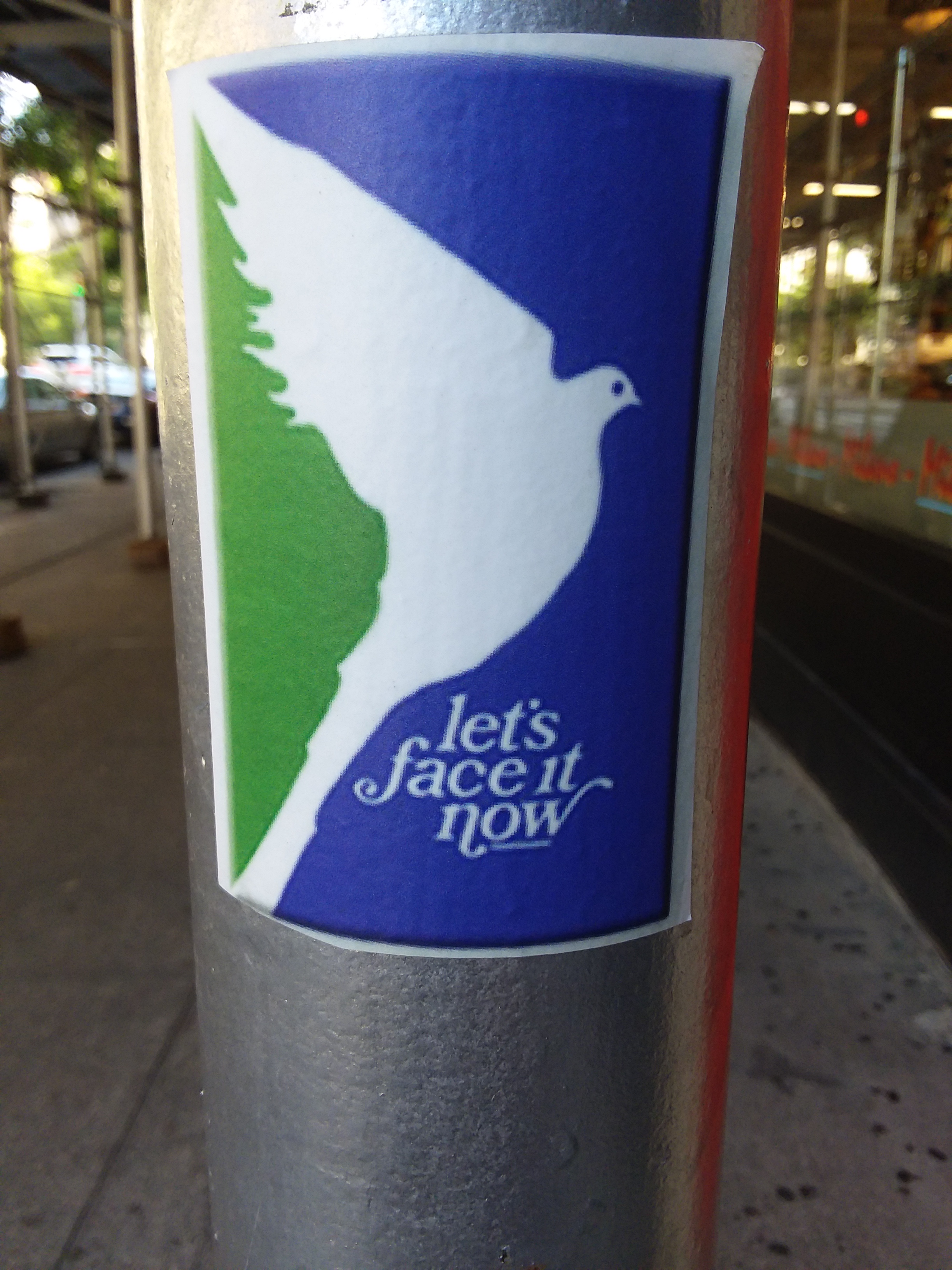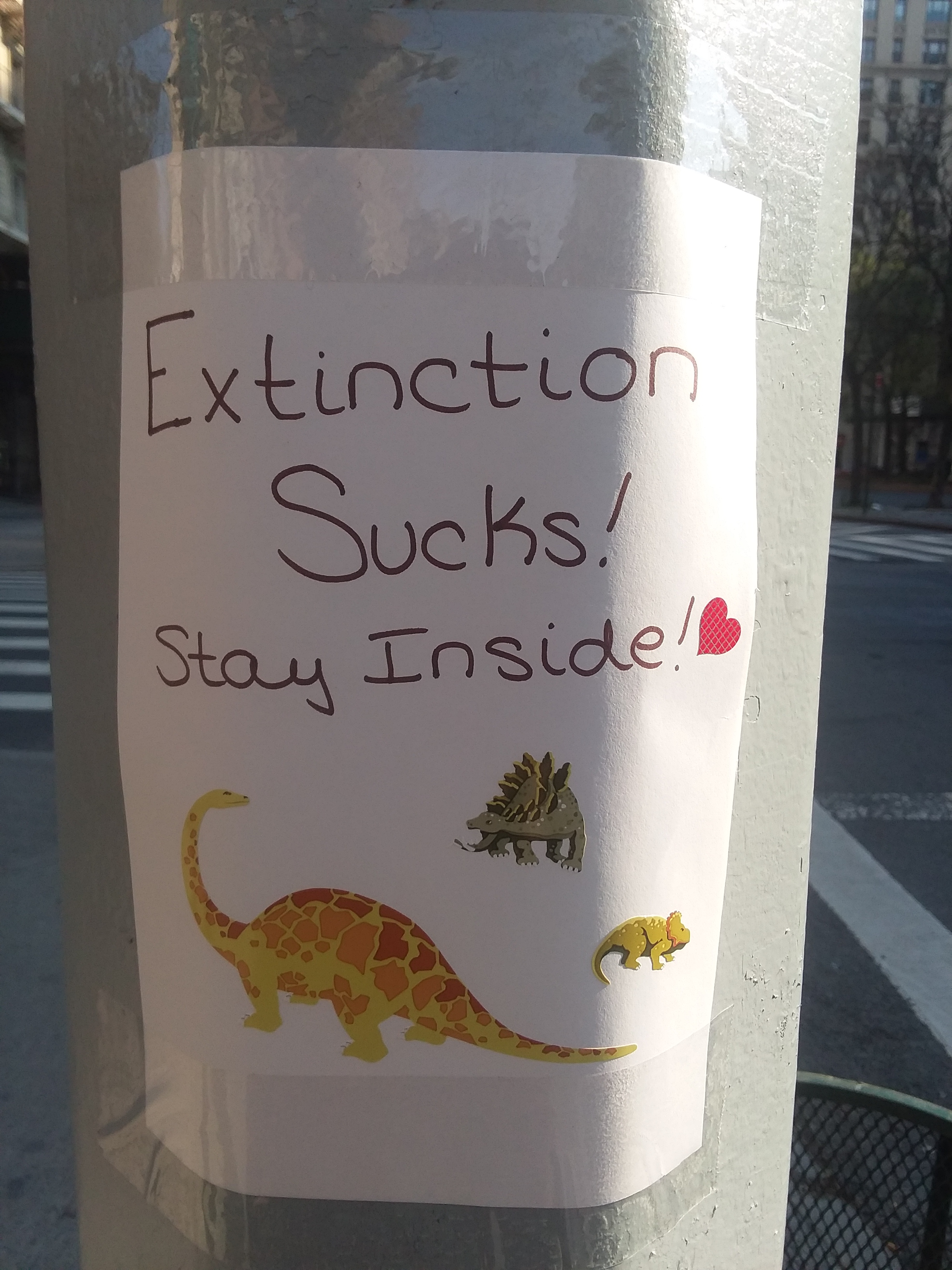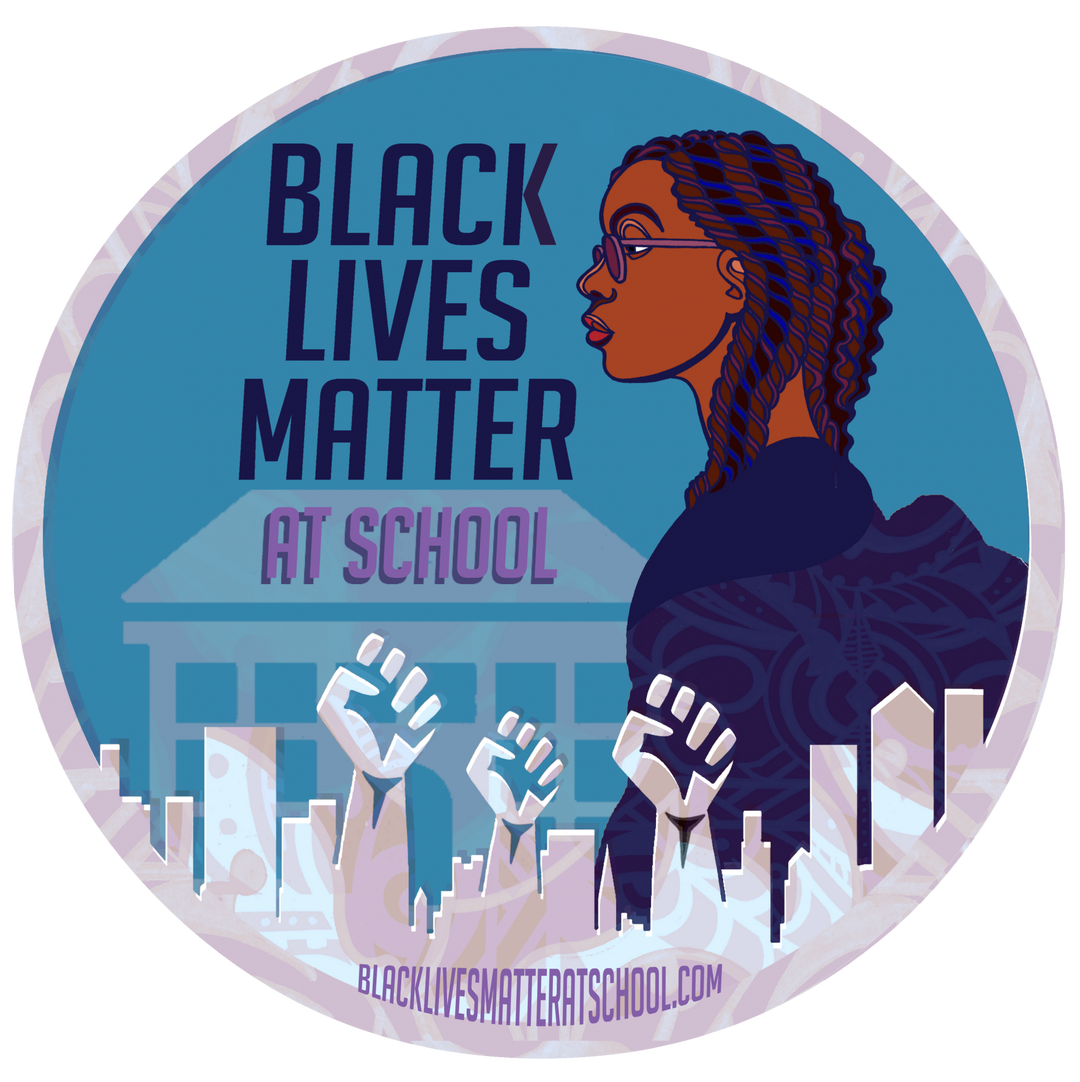
NYC is firmly committed to masks — on the people you see walking around, and on the statues, posters and public art. You can find them on the streets or on the subway (with instructions on proper wear in all 8 of NYC’s official languages).
The statue masks have the hardest time keeping their shape after a rain, snow and stretching. Some appear on famous people; others on animals, local ones like the plaster cow outside of my local butcher or symbolic ones, such as Patience and Fortitude, the lions outside of the New York Public Library. But, as I worry about my place on various vaccination waiting lists, the most appropriate masked statue, for me, is the full size, standing bronze of Eleanor Roosevelt on 72nd Street at the start of Riverside Drive. The statue, by Penelope Jencks, was installed in 1996 and has become a place for meetings, protests and commemorations. She lived long before COVID-19, of course, but her life was severely impacted by the pandemics of the earlier 19th century. She had tuberculosis, probably in early childhood, her mother died of diphtheria, she lost a brother to scarlet fever, and her husband, President Franklin Delano Roosevelt suffered from polio — all diseases for which we now have vaccinations. Firmly committed to equality, public health and the end of income disparity, she would be reminding everyone to wear the masks and get the vaccines,
What would normally be crowded streets in SoHo and Tribeca look empty now, thanks to the pandemic and the winter weather. Some of the buildings still have protective panels left from the summer’s protests. Walking on Prince Street, I found these recognizable celebrity portraits with masks cut & pasted on before printing. John Lennon, Kermit, and Michelle Obama, among others are wearing their surgical light blue paper masks.
The most recognizable New Yorker of all has been showing up on the street with a blue mask and a small band-aid on her vaccinated arm. Liberty is currently featured on the LinkNYC kiosks. Those wi-fi hotspots, which look like giant cell phones, pop up on avenues and plazas.
So, listen to Eleanor, Kermit and Liberty — protect your health and your communities, get your vaccines and wear at least one mask.








 She looks very strong. It reminded me of a Girl Scout merit badge, if one had been created for Linda Brown, Ruby Bridges, and the other children whose courage was proven when they integrated schools.
She looks very strong. It reminded me of a Girl Scout merit badge, if one had been created for Linda Brown, Ruby Bridges, and the other children whose courage was proven when they integrated schools.